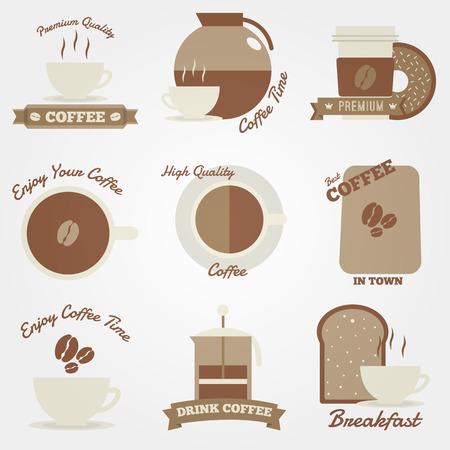1. Understanding Your Target Market
If youre planning to open a coffee shop, one of the first and most important steps is understanding who your ideal customer is. Why? Because your target market should directly influence where you choose to set up shop. A great location for one type of customer might be completely wrong for another.
Know Who Youre Serving
Start by defining your target audience. Are you aiming to attract busy professionals grabbing coffee on their commute? College students looking for a cozy study spot? Or maybe weekend brunch-goers who love artisanal lattes and avocado toast?
Common Coffee Shop Customer Types
| Customer Type | Lifestyle & Preferences | Ideal Location Match |
|---|---|---|
| Commuters | On-the-go, need fast service, early hours | Near transit stations, business districts |
| Students | Need Wi-Fi, study-friendly space, affordable drinks | Close to colleges or universities |
| Remote Workers & Freelancers | Aesthetic environment, strong Wi-Fi, power outlets | Coworking hubs, residential neighborhoods |
| Tourists & Shoppers | Coffee as part of their experience, Instagram-worthy spots | Main streets, shopping areas, tourist attractions |
| Moms & Families | Coffee with kid-friendly options, room for strollers | Parks, family-oriented suburbs |
Dive Into Demographics and Foot Traffic Patterns
Your location should reflect the habits of your target customer. For example, if your audience is mostly working professionals, look for a spot in a business district with high morning foot traffic. On the other hand, if youre targeting weekend brunch crowds or families, consider suburban areas or places near parks and community centers.
Key Factors to Research:
- Age range: What age group does your brand speak to?
- Lifestyle: Are they health-conscious? Budget-minded? Trend-followers?
- Schedules: When are they likely to get coffee—early mornings, afternoons, weekends?
- Pain points: Do they want fast service? A quiet place to focus? Somewhere to socialize?
- Your brand vibe: Does your store feel more like a hip downtown hangout or a cozy neighborhood nook?
The better you understand these aspects of your ideal customer, the easier it becomes to pick a location that naturally draws them in. Remember—your coffee shop doesn’t need to be everywhere. It just needs to be exactly where your people are.
2. Analyzing Neighborhood Vibes and Culture
When it comes to choosing the perfect spot for your coffee shop, understanding the neighborhoods vibe is just as important as square footage or foot traffic. The local atmosphere, community values, and lifestyle trends can make or break your business. Matching your brand with the surrounding culture helps you create a space that feels authentic and welcoming to locals.
Why Neighborhood Culture Matters
People tend to gravitate toward places that reflect their personality and daily habits. If your coffee shop doesn’t align with the lifestyle of the community, it might feel out of place—and that could mean fewer customers walking through your doors. A trendy, fast-paced urban district may love a sleek, minimalist café with cold brew on tap, while a small-town neighborhood might prefer a cozy, family-friendly spot serving up classic drip coffee and homemade pastries.
Key Elements to Observe
Take some time to explore different neighborhoods before settling on a location. Here are a few things to look for:
| Element | What to Look For |
|---|---|
| Demographics | Age groups, income levels, education, family size—these influence preferences in menu items, pricing, and design. |
| Lifestyle Trends | Are people into wellness? Tech-savvy? Creative types? Your shop can cater to these interests with menu choices and ambiance. |
| Community Values | Sustainability, supporting local businesses, diversity—aligning with these values builds trust and loyalty. |
| Pace of Life | A bustling area may call for grab-and-go options; a quieter suburb may welcome long sit-downs and conversation spaces. |
Tuning Your Brand to Fit In
Your coffee shop brand should feel like it belongs in the neighborhood. This doesn’t mean changing who you are—it means finding areas where your identity overlaps with what locals appreciate. For example:
- If youre all about sustainability, look for eco-conscious communities.
- If your brand is rooted in creativity and collaboration, consider locations near art districts or universities.
- If you offer premium or specialty drinks, aim for neighborhoods where consumers value quality over quantity.
Create an Experience That Resonates
The goal is to make people feel like your coffee shop is part of their daily routine—or better yet, their lifestyle. From music playlists and interior design to cup sizes and seating arrangements, everything should reflect the local energy. When customers walk in and think “this place gets me,” you know you’ve nailed it.

3. Evaluating Visibility and Accessibility
When it comes to opening a coffee shop, being easy to find and get to can make or break your business. Whether youre aiming for the morning commuter crowd or weekend foot traffic, visibility and accessibility are key factors in choosing the right location.
Main Street vs. Side Street
The street your coffee shop sits on can influence how many people walk through your doors each day. Heres a quick comparison:
| Location Type | Pros | Cons |
|---|---|---|
| Main Street | High foot traffic, better visibility, more impulse visits | Higher rent, more competition |
| Side Street | Lower rent, quieter atmosphere, unique charm | Less visibility, may require more marketing efforts |
Signage Opportunities
Your signage is your silent salesperson. A clear and eye-catching sign helps attract passersby who might not be actively looking for a coffee shop. If youre on a side street or tucked inside a complex, make sure you can install signs at visible points—like near intersections or building entrances—to guide customers to your door.
Walkability Matters
In urban areas, walkability is everything. A spot near office buildings, schools, parks, or public transit hubs increases the chances of regular walk-in customers. Use tools like Walk Score to evaluate how pedestrian-friendly an area is before committing to a lease.
Parking Availability
While walkability is important, don’t overlook parking—especially in suburban or smaller towns where driving is more common. Ask yourself:
- Is there free or metered parking nearby?
- Is street parking available during peak hours?
- If in a shopping plaza, how crowded is the lot?
A lack of convenient parking can turn away potential customers who just want a quick coffee run.
Quick Tip:
If you’re considering a location with limited parking or visibility, pair it with strong online presence and clear directions on Google Maps to help customers find you easily.
4. Considering Competition and Complementary Businesses
When choosing a location for your coffee shop, its crucial to take a close look at who else is in the neighborhood. While it might seem counterintuitive, having other coffee shops nearby isnt always a bad thing. In fact, the right kind of competition can actually help your business grow. Its all about understanding how to position yourself.
Understanding Your Competitors
Start by mapping out existing coffee shops in the area. Are they big chains like Starbucks or Dunkin’, or are they local independents? What’s their price point, vibe, and customer base? Knowing this helps you figure out how your shop can stand out—whether it’s through specialty drinks, cozy ambiance, or unbeatable customer service.
Competition Overview Table
| Coffee Shop | Type | Strengths | Weaknesses |
|---|---|---|---|
| Starbucks | Chain | Brand recognition, mobile ordering | Lack of personalization, high volume environment |
| Local Indie Café | Independent | Unique atmosphere, community feel | Limited marketing budget, shorter hours |
The Power of Clustering
You’ve probably noticed that certain areas have multiple coffee shops within just a few blocks of each other—and they all stay busy. That’s not a coincidence. This is called clustering. When businesses offering similar products group together, they can actually draw more customers overall. Coffee lovers know where to go when they want options, and being part of that destination spot can increase foot traffic to your door.
Identifying White Space Opportunities
On the flip side, you might find an area with no coffee shops at all. This could be a sign of untapped potential—or a red flag. Ask yourself why there arent any cafes there yet. Is there enough foot traffic? Do nearby residents or workers want a coffee spot? If you identify what’s called “white space” in the market—a gap where demand exists but supply doesn’t—you could be stepping into a golden opportunity.
Key Questions to Ask:
- Who are my direct competitors within a 1-mile radius?
- What makes my concept different from theirs?
- Are there complementary businesses nearby (like bookstores, gyms, coworking spaces)?
- Is the area underserved when it comes to quality coffee options?
Complementary Businesses That Can Boost Traffic
Certain types of neighboring businesses can help drive traffic to your coffee shop without competing with you directly. These are known as complementary businesses—places where people might already be spending time and would welcome a great cup of coffee nearby.
Examples of Complementary Businesses:
| Business Type | Why It Helps Your Coffee Shop |
|---|---|
| Coworking Spaces | Coffee is essential fuel for remote workers and freelancers. |
| Bookstores | A quiet place pairs well with a warm drink and relaxed atmosphere. |
| Laundromats | Customers waiting on laundry often look for ways to pass the time. |
| Gyms/Yoga Studios | Post-workout smoothies or cold brew make for a perfect combo. |
The key takeaway here is balance. Too much competition in one spot can make it hard to stand out, while no competition might mean there’s no demand. Look for locations with just the right mix of nearby competitors and supportive businesses to give your coffee shop the best chance at success.
5. Weighing Costs and Long-Term Potential
When choosing the perfect spot for your coffee shop, its not just about finding a trendy neighborhood or a busy street corner — you need to strike a smart balance between what you can afford today and how that location can support your business growth in the future.
Understand Your Budget vs. Growth Opportunities
You might find a charming space in a high-traffic area, but if the rent eats up most of your monthly revenue, it could hurt your business in the long run. On the other hand, a more affordable location in an up-and-coming neighborhood may offer more growth potential as the area develops.
Compare Costs and Benefits
| Factor | High-Cost Area | Affordable Area |
|---|---|---|
| Monthly Rent | High | Low to Moderate |
| Foot Traffic | Very High | Moderate (Potential to Grow) |
| Zoning Restrictions | Tighter Regulations | More Flexible |
| Long-Term Value | Saturated Market | Pioneering Opportunity |
Dive Into Lease Agreements and Rent Trends
A great lease can make or break your bottom line. Look for leases that provide flexibility — like shorter terms with renewal options — so you’re not locked into an unfavorable situation. Also, research local rent trends. Are prices rising fast? Will you be able to afford increases when your lease is up?
Zoning Laws Matter
Zoning laws determine what kind of businesses can operate in certain areas. Before signing anything, check with your city’s planning department to make sure you’re allowed to open a coffee shop at that location. Some zones may restrict food service, outdoor seating, or even operating hours.
The Impact of Future Developments
A new apartment complex or office building nearby could mean more customers down the road. But construction noise and limited parking during development can also affect foot traffic temporarily. Keep an eye on city plans and talk to local business associations to learn about upcoming changes in the neighborhood.
A Quick Checklist for Evaluating Long-Term Potential:
- ✓ Is rent sustainable based on projected sales?
- ✓ What’s the average lease term and are there renewal clauses?
- ✓ Are there any zoning restrictions that could limit operations?
- ✓ Are there planned developments that could increase foot traffic?
- ✓ How competitive is the area now, and will it become oversaturated?
The goal is to choose a location that fits within your current budget while also offering room for your business to grow. With careful research into costs, legal factors, and future development plans, you’ll be better equipped to make a decision that sets your coffee shop up for lasting success.

